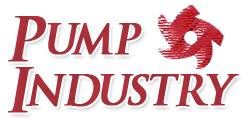Jet Pumps (Ejector Pumps)

Jet pumps, also known as ejector pumps or eductor pumps, are devices that use the Venturi effect to transfer fluids or create vacuum conditions. They operate by using a high-pressure fluid, such as a liquid or gas, to create a low-pressure region that draws in and entrains another fluid. Jet pumps are commonly used in various applications, including water pumping, fluid mixing, and creating a vacuum in systems. Here’s how jet pumps work and their key components:
- Nozzle: The nozzle is a constricted section of the jet pump where the high-pressure fluid is forced through. As the fluid passes through the nozzle, its velocity increases, and the pressure decreases according to the Bernoulli’s principle.
- Throat: The throat is the section of the jet pump located downstream of the nozzle. It has a larger cross-sectional area than the nozzle, causing the fluid velocity to decrease and the pressure to increase compared to the nozzle.
- Mixing Chamber: The mixing chamber is the portion of the jet pump where the high-velocity fluid from the nozzle and the fluid to be entrained come together. The interaction between the two fluids creates a mixing and entraining effect.
- Diffuser: The diffuser is the section of the jet pump that follows the mixing chamber. It gradually expands in cross-sectional area, allowing the fluid to decelerate and the pressure to increase further. The diffuser helps convert the kinetic energy of the fluid into pressure energy.
Jet pumps can be operated using various types of fluids, such as liquid-liquid, liquid-gas, or gas-gas combinations, depending on the specific application requirements. They offer advantages such as simplicity, reliability, and the ability to handle a wide range of fluids and viscosities.
In water pumping applications, jet pumps are commonly used for shallow wells or as a booster pump to increase the pressure of the fluid being pumped. They can also be employed as eductors in mixing applications, where they help introduce and mix additives or chemicals into a flowing fluid stream.
It’s important to consider factors such as fluid properties, flow rates, pressure differentials, and the specific requirements of the application when selecting and operating jet pumps. Following manufacturer guidelines and recommended maintenance practices is essential for optimal performance and longevity of jet pump systems.
Related Links
Multiple keywords
pumpmanufacturer, pump, aoddpump, aodd, aoddpumps


